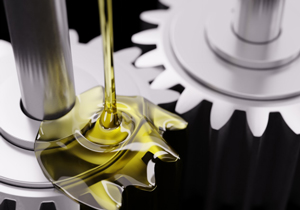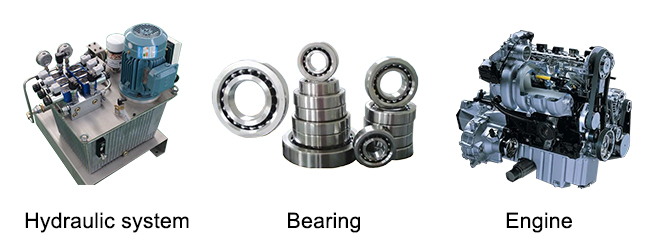How does a Lubrication Pump Work?
Lubrication pump is a common mechanical equipment, its role is to realize the lubrication of mechanical equipment through the delivery of lubricating oil or grease. The working principle of the lubrication pump mainly includes the structure and working process of the lubrication pump. In this blog post, we will delve into the inner workings of lubrication pumps, understanding their mechanisms, and the importance of proper lubrication in industrial applications.
Lubrication pumps play a vital role in keeping various industrial machines and equipment running smoothly. They ensure that critical components receive the necessary lubrication to reduce friction and wear, ultimately extending the lifespan of these machines.
Understanding Lubrication

Before we dive into how lubrication pumps work, it's crucial to understand the significance of lubrication in machinery. Lubrication involves the application of a lubricant, typically oil or grease, to various moving parts within a machine. The lubricant forms a protective film between surfaces, reducing friction, dissipating heat, and preventing premature wear and tear. Without proper lubrication, machines can experience increased friction, overheating, and eventual failure.
How Lubrication Pumps Work
Lubrication pumps usually consist of an electric motor, a pump body, a hydraulic control system and a lubrication system. The electric motor generates fluid pressure by driving the rotor of the pump body, thus realizing the delivery of lubricating oil or grease. The hydraulic control system is used to control the working condition of the pump body so that it can work according to the set requirements. The lubrication system refers to the mechanical equipment lubricated by the lubrication pump, through the lubricating oil or grease conveyed by the lubrication pump to provide the necessary lubrication protection for mechanical equipment.
- Lubricant Reservoir: Lubrication pumps are equipped with a reservoir or container that holds the lubricant. This reservoir can vary in size, depending on the specific application and the volume of lubricant required.
- Pumping Mechanism: The heart of a lubrication pump is its pumping mechanism. There are different types of lubrication pumps, such as manual, electric, or pneumatic, each with its unique method for generating pressure.
- Distribution System: Once the pump generates pressure, the lubricant is pushed through a distribution system. This system consists of pipelines, tubing, or channels that carry the lubricant to the target components in need of lubrication.
- Lubrication Points: The lubrication pump is connected to various lubrication points on the machine or equipment. These points are strategically located at critical parts, ensuring that the lubricant reaches the areas with the highest friction.
- Timing and Control: Some lubrication systems are equipped with timers or control units to regulate the frequency and volume of lubrication. This ensures that the right amount of lubricant is delivered at the right time, optimizing machine performance.
The working process of lubrication pump can be divided into three stages: suction, compression and discharge. In the suction stage, the motor drives the rotor of the pump body to rotate, so that the volume of the pump body is increasing, thus generating negative pressure, lubricating oil or grease is sucked into the pump body. In the compression stage, the volume of the pump body gradually decreases, the pressure gradually increases, so that the lubricant or grease is compressed, and under the action of the hydraulic control system is transported to the lubrication system. In the discharge stage, the volume of the pump body is further reduced, the pressure reaches its maximum value, the lubricant or grease is discharged from the pump body, into the lubrication system, to provide lubrication protection for mechanical equipment.
The working principle of the lubrication pump is based on the basic principles of fluid mechanics, that is, through the motor driven pump rotor rotation, so that the lubricating oil or grease in the pump body to produce a pressure difference, so as to realize the lubricating oil or grease delivery. Optimization of the structural design and hydraulic control system of the lubrication pump can improve the working efficiency and stability of the lubrication pump, so as to better provide lubrication protection for mechanical equipment.
Importance of Proper Lubrication
Proper lubrication is essential for maintaining the efficiency and longevity of machinery. It reduces friction, minimizes heat generation, and prevents excessive wear and tear on moving parts. Inadequate lubrication can lead to breakdowns, increased maintenance costs, and decreased productivity.
The working principle of lubrication pump has a wide range of uses in practical applications. Lubrication pumps can be used in the lubrication system of various mechanical equipment, such as engines, hydraulic systems, bearings and so on. Through regular or periodic lubrication of mechanical equipment, you can reduce the friction and wear of mechanical equipment, extend the service life of mechanical equipment, improve the efficiency and reliability of mechanical equipment.

Lubrication pump is an important mechanical equipment, its working principle is based on the basic principles of fluid dynamics, through the motor driven pump rotor rotation, to achieve the delivery of lubricating oil or grease. The working principle of lubrication pump has a wide range of uses in practical applications, can provide the necessary lubrication protection for mechanical equipment. By optimizing the structural design of the lubrication pump and the hydraulic control system, the working efficiency and stability of the lubrication pump can be improved to better meet the lubrication needs of mechanical equipment. A variety of lubrication pumps and other pumps are available at the ATO store, which can be purchased if necessary.

